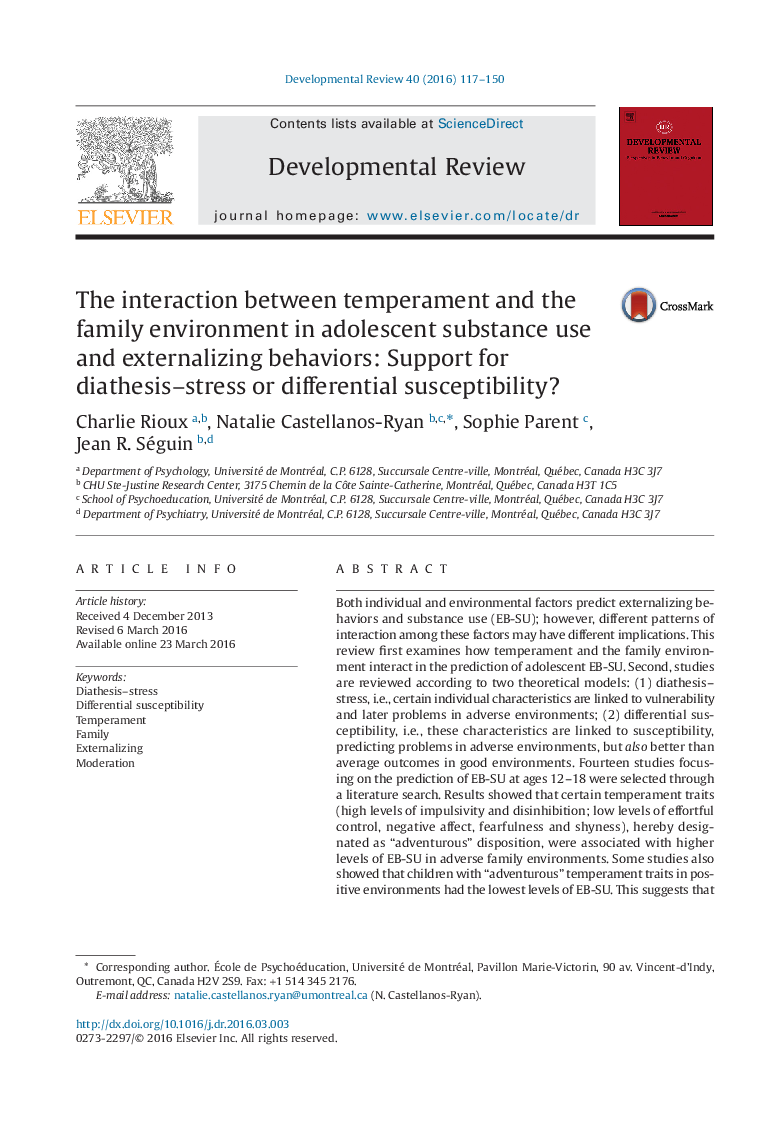| کد مقاله | کد نشریه | سال انتشار | مقاله انگلیسی | نسخه تمام متن |
|---|---|---|---|---|
| 353432 | 618795 | 2016 | 34 صفحه PDF | دانلود رایگان |
• Temperament and the family environment interact to predict externalizing behaviors.
• Studies assessing predictors in adolescence support the diathesis–stress model.
• Studies with predictors in childhood support the differential susceptibility model.
• Child temperament may indicate susceptibility to enriched and adverse environments.
Both individual and environmental factors predict externalizing behaviors and substance use (EB-SU); however, different patterns of interaction among these factors may have different implications. This review first examines how temperament and the family environment interact in the prediction of adolescent EB-SU. Second, studies are reviewed according to two theoretical models: (1) diathesis–stress, i.e., certain individual characteristics are linked to vulnerability and later problems in adverse environments; (2) differential susceptibility, i.e., these characteristics are linked to susceptibility, predicting problems in adverse environments, but also better than average outcomes in good environments. Fourteen studies focusing on the prediction of EB-SU at ages 12–18 were selected through a literature search. Results showed that certain temperament traits (high levels of impulsivity and disinhibition; low levels of effortful control, negative affect, fearfulness and shyness), hereby designated as “adventurous” disposition, were associated with higher levels of EB-SU in adverse family environments. Some studies also showed that children with “adventurous” temperament traits in positive environments had the lowest levels of EB-SU. This suggests that prevention of EB-SU might target family factors such as parenting and focus on children with “adventurous” temperament traits. Further, studies that supported the differential susceptibility model were those assessing temperament and the family environment in childhood and studies that supported the diathesis–stress model assessed these variables in adolescence. It is thus possible that some of these “adventurous” temperament traits, with regard to EB-SU, would be indicators of susceptibility to both enriched and adverse environments in childhood but no longer in adolescence, when they would only be indicators of vulnerability to adverse environments.
Journal: Developmental Review - Volume 40, June 2016, Pages 117–150
